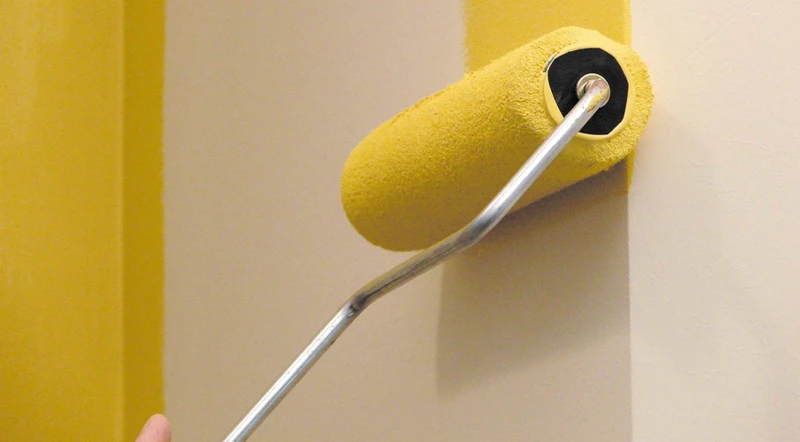Latex paint, known for its durability and easy cleanup, has become a staple in homes and commercial spaces. As a water-based paint, it offers a less toxic alternative to oil-based paints, with quicker drying times and a more forgiving application process. However, even with its user-friendly nature, there are still common latex paint errors that can occur, leading to unsatisfactory results and the need for latex paint troubleshooting.
Common Latex Paint Errors
Embarking on a painting project with latex paint can be exciting, but pitfalls await the unwary. Understanding and avoiding common mistakes ensures a smooth finish and lasting results. Let’s delve into some frequent missteps to keep your painting project on track.
Latex Paint Surface Preparation Mistakes
- Skipping thorough cleaning of surfaces to be painted
- Failing to repair cracks, holes, and imperfections before painting
- Applying paint on surfaces that are still damp
- Not using a primer when necessary, especially on porous or stained surfaces
Latex Paint Technique Errors
- Not mixing the paint thoroughly before application
- Using incorrect brushes or rollers that leave streaks and lint
- Overloading the brush or roller with paint, leading to drips and uneven coating
- Applying too much pressure during painting, which can cause ridges and marks
Painting with Latex Pitfalls
- Ignoring the manufacturer’s recommendations for drying times between coats
- Painting in extreme temperatures or high humidity, affecting the paint’s drying and curing process
- Choosing the wrong sheen for the area being painted
- Touching up with a different batch of paint, resulting in color discrepancies
Best Practices for Latex Paint Application
Applying latex paint can be a breeze when armed with the right knowledge and tools. Following best practices latex paint guidelines is essential to ensure a professional-looking finish. Here are some key application tips to consider.
Latex Paint Application Tips
Ensuring a flawless finish with latex paint involves more than just careful brushwork. These latex paint application tips can elevate your painting project:
- Choose the right brush or roller for the job, considering the paint type and surface texture.
- Apply paint in thin, even coats to avoid drips and ensure a uniform appearance.
- Keep a wet edge to prevent lap marks and maintain a consistent sheen.
- Allow sufficient drying time between coats for the best results.
Preventing Latex Paint Problems
To avoid latex paint issues, a proactive approach is key. Consider the following strategies to prevent problems before they arise:
- Test the paint on a small, inconspicuous area before fully committing to a color and finish.
- Invest in high-quality painting tools to achieve the desired outcome.
- Follow the paint manufacturer’s instructions for optimal application conditions and techniques.
- Store leftover paint properly to maintain its quality for touch-ups or future projects.
Avoid Latex Paint Issues
Anticipating challenges with latex paint can save time and frustration. Here’s how to steer clear of common troubles:
- Be mindful of the room’s lighting and how it might affect the paint’s appearance.
- Address any moisture problems in the space before painting to prevent future peeling or bubbling.
- Use painter’s tape for clean edges and remove it at the right time to avoid damaging the fresh paint.
- Dispose of paint and materials responsibly, following local regulations.
Latex Paint Troubleshooting
Even with careful planning, latex paint mistakes can occur. Knowing how to address these issues is crucial for a polished end result. Let’s explore some common challenges and how to fix them.
Common Mistakes with Latex Paint
When issues arise, swift latex paint troubleshooting can turn a potential disaster into a minor hiccup. Some common mistakes with latex paint include:
- Blistering or bubbling, often due to painting over a dirty or moist surface
- Peeling paint, which can occur when applied to a surface that wasn’t properly primed or sanded
- Alligatoring, where the paint cracks in a pattern similar to an alligator’s skin, typically due to applying an overly thick coat or painting over an incompatible paint type
Latex Paint Mistakes in Different Environments
Different environments can introduce unique challenges when painting with latex. Be mindful of these considerations:
- High humidity can extend drying times and may require a longer interval between coats.
- Direct sunlight can cause the paint to dry too quickly, leading to lap marks and a patchy finish.
- Cold temperatures can prevent proper adhesion and curing, making the paint more susceptible to problems.
Conclusion
Latex paint offers many advantages for both amateur and professional painters. By understanding common latex paint errors and implementing best practices for latex paint application, you can achieve a beautiful, lasting finish. Remember that preparation is key, and proper technique can make all the difference in avoiding latex paint issues.
When embarking on a painting project, it’s crucial to avoid common pitfalls that can affect the final result. Whether you’re experimenting with color blocking techniques, choosing a new exterior paint color for your home, or working with latex paint, understanding the dos and don’ts is essential. Dive into our informative articles that highlight common mistakes in color blocking, provide guidance on choosing exterior paint colors for your home, and explore the common painting mistakes that can lead to less-than-desirable outcomes. Equip yourself with this knowledge to ensure your next painting venture is a success!
FAQs on Latex Paint Challenges
Let’s address some frequently asked questions to iron out any lingering doubts about working with latex paint:


